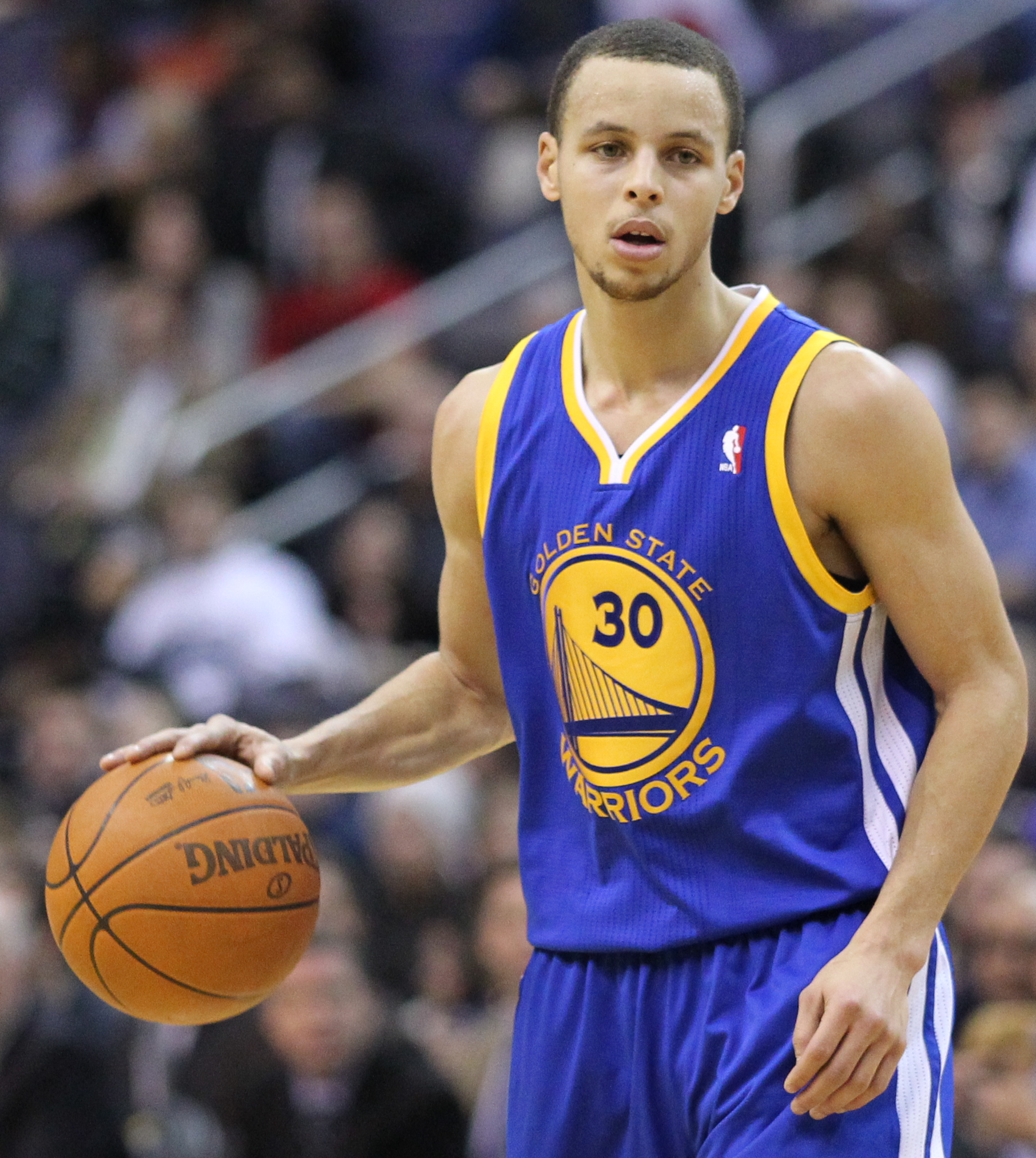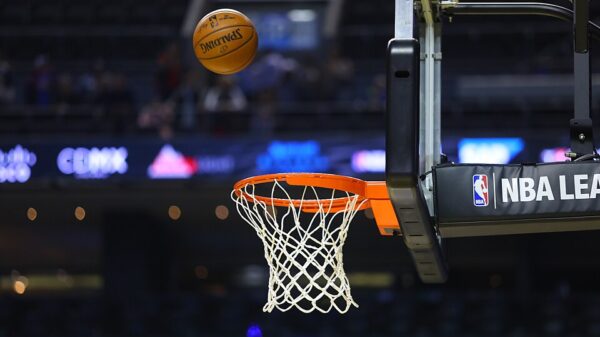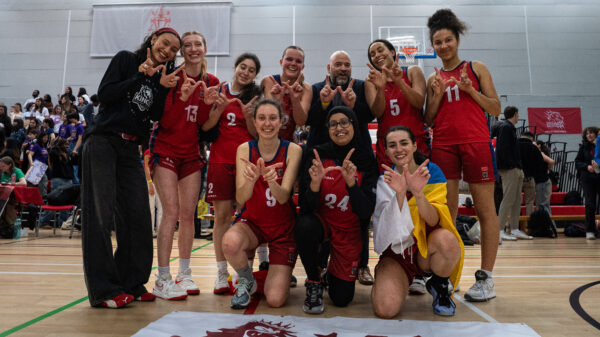Staff Writer Abyan Memon explores how Three-Point shots, popularised by the likes of Steph Curry, may be contributing to a decline in NBA viewership.
NBA viewership numbers have significantly declined this season. Most of the blame is being put on the heavy reliance on three-point shooting to win games.
The reigning champions Boston Celtics’ play style can be described simply as ‘chucking up three-pointers’. In a loss against the Memphis Grizzlies, the Celtics made 18 three-pointers, comparable to the Grizzlies’ 15. However, the Celtics attempted a staggering 60 shots from beyond the arc, compared to the Grizzlies’ 33. The ironic part is that it works. Aside from the occasional odd losses, the Celtics are winning games and are favoured to repeat as champions.
The Celtics are not the only ones. A decade ago, teams averaged 22.4 three-point attempts per game, that number has now nearly doubled to around 37.6 so far this season. After the Splash Brothers showed how effective three-point shooting could be if mastered, and Steph Curry inspired an entire generation of hoopers to master the skill, teams have the shooters necessary to build their teams with a three-point shooting identity.
This is not the first time a trend in the NBA has affected viewership, whether for the better or the worse. Neither is Steph Curry the only one to blame for what the NBA has become. Multiple players and teams throughout NBA history have contributed to positionless basketball and the three-point barrage pandemic.
Fast-Paced Offenses
During the 1980s, the Showtime Lakers, led by Magic Johnson, popularised fast-paced transition-heavy basketball. With flashy no-look passes and electrifying transition dunks, they inspired many memorable, fast-paced, offence-heavy teams years down the line, including the Steph Curry Warriors.
The Showtime Lakers can be pinpointed as the team that started the trend of NBA teams emphasizing offense over defense, with Magic Johnson, who shined as a point guard in the body of a centre, our first example of positionless basketball.
Two decades later, the Seven Seconds or Less Suns gave the Showtime Lakers a run for their money when it came to fast-paced offense. As their name suggests, their ideology was to get off a shot only 7 seconds into the 24-second play clock. Led by Steve Nash, who mastered the pick-and-roll, the Seven Seconds or Less Suns drew in casual viewers with their fast-paced, free-flowing offense. This set the foundation for small-lineup offense-heavy teams, including again the Steph Curry Warriors.
Lob Threat Offenses
During the same decade, Vince Carter transfigured dunking from a high-percentage athletic finishing move to a flashy, even more athletic, crowd-erupting highlight play. His flashy dunking style was incorporated into the Lob City Clippers’ identity play.
As suggested by the name, the Lob City Clippers were led by Chris Paul playing pick-and-roll and threw up lobs to the athletic bigs Blake Griffin and DeAndre Jordan. This Clippers team inspired teams like the James Harden-Dwight Howard Rockets and the Trae Young-Clint Capela Hawks, both offence-heavy teams who struggled on the defensive end.
Frontcourt Shooters
Some of the best frontcourt players in NBA history are known for their post-play, including all-time greats Shaquille O’Neal, Hakeem Olajuwon, Tim Duncan, Kareem Abdul-Jabbar, and George Mikan. Dirk Nowitzki first revolutionised the power forward and centre positions as a mid-range fadeaway shooter. Then Kevin Durant, though classified as a small forward, completely changed the game for centers and power forwards as a seven-footer who lacked size but not the skill to knock down a shot from anywhere on the court.
The two together inspired the likes of Kristaps Porzingis, Giannis Antetokounmpo, Chet Holmgren, Victor Wembanyama, Karl-Anthony Towns, Chris Bosh, and others. Post players were now attempting and knocking down three-point shots.
Iso-Heavy Offenses
As we approach modern-day basketball, Steph Curry can be viewed as the sole reason for players attempting three-pointers. However, Steph Curry has always been a team player. Much of what we see today is hero-ball stale-offense isolation shots. This is where James Harden comes in.
James Harden was a master of his craft. His craft? Isolation play. Amongst all the great guards the 2010s brought, James Harden may be the best one-on-one guard from the decade. Unlike Steph Curry’s negative effect on ratings, James Harden’s was felt immediately. Both casual viewers and basketball purists disliked watching James Harden slow down the offense with his iso-heavy, foul-seeking playstyle.
Positionless Basketball
The final piece of the puzzle is positionless basketball. We have already covered Magic Johnson, who can be called the innovator of positionless basketball. However, the man who truly defines positionless basketball is Lebron James. James, considered by many the greatest man ever to touch a basketball (closing in on Michael Jordan), has played and excelled at all five positions of the ball game, and after Lebron James, the game has just never gone back.
Running through MVP candidates of the 2010s and 2020s, we see frontcourt playmakers like Magic Johnson in Nikola Jokić, Draymond Green, and Giannis Antetokounmpo. We also see frontcourt shooters like Dirk Nowitzki in Joel Embiid, athletic smalls like Vince Carter in Russell Westbrook and Derrick Rose, and Lebron James-type versatile forwards in Kawhi Leonard, Paul George, and Jimmy Butler.
Therefore, as much as Steph Curry has contributed to the three-point barrage, he is not solely responsible for the NBA’s shift towards iso-heavy offenses and offense-heavy playstyles today.
As I write this article, NBA Commissioner Adam Silver has just announced that the league is investigating trends of increased three-point shooting and taking criticisms of offences being too similar seriously.
While we fans regularly complain about the three-point shooting, any rule change to limit three-point shots would provoke outrage across the fanbase, as teams who rely heavily on three-point shooting (pretty much all of them) will struggle to find their new footing.



















